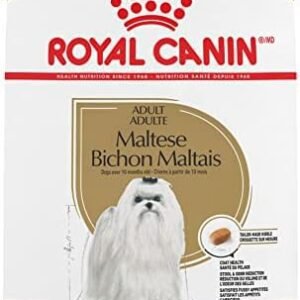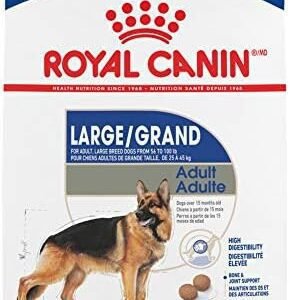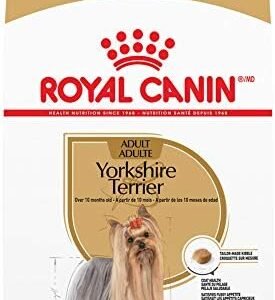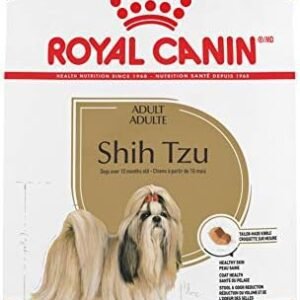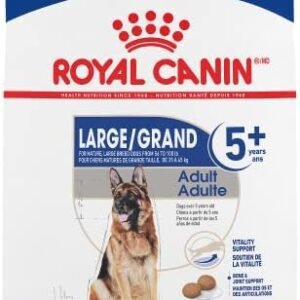Introduction
Did you know that mayo, that creamy and delectable condiment, is a staple in kitchens around the world? Whether it’s slathered on sandwiches, mixed into salads, or used as a dip, mayo is a versatile and flavorful addition to many dishes. But what about our four-legged companions? Can dogs eat mayo? This question often comes to mind as we share our meals with our furry friends, and it’s crucial to understand which human foods are safe for dogs.
In this article, we embark on a journey to answer the question of whether dogs can indulge in mayo. We’ll delve into the world of canine dietary choices and explore the pros and cons of feeding mayo to your dog. While mayo may be a beloved condiment in the human diet, it’s essential to consider the specific nutritional and health implications when sharing it with our canine companions. We’ll also discuss how much mayo is too much for dogs and what to do if your dog accidentally consumes mayo or a part of a meal that includes mayo and may not be safe for them.

So, if you’ve ever wondered about the safety of mayo in your dog’s diet and want to make informed choices about what you feed your canine friend, read on to learn more about mayo and its role in your dog’s nutrition. Your dog’s well-being is a top priority, and understanding the nuances of their diet is an essential part of responsible pet ownership.
Table of Contents
1: Can Dogs Eat Mayo?
Mayo, the creamy and tangy condiment loved by many, is a staple in countless sandwiches, salads, and recipes. But when it comes to our canine companions, can dogs eat mayo? Let’s explore this question and uncover the nutritional aspects, benefits, and potential drawbacks of including mayo in your dog’s diet.
Is Mayo Toxic or Dangerous for Dogs?
Mayo, in moderation, is not considered toxic or dangerous for dogs. This creamy condiment is generally safe for canine consumption, but there are some important caveats to consider.
Mayo, typically made from ingredients like eggs, oil, and vinegar, contains components that, in isolation, are safe for dogs. Eggs provide a protein boost, while the fats in mayo can be a source of essential fatty acids, such as omega-3 and omega-6, which contribute to your dog’s overall health.
However, it’s crucial to be mindful of the mayo’s ingredients beyond these basic components. Some commercial mayo products may contain additives, preservatives, or flavorings that could be harmful to your dog. Always check the label and ensure that the mayo you offer your dog is free of any ingredients that may be unsafe for them.
Nutrition Facts of Mayo
Let’s take a closer look at the nutritional composition of mayo. Below is a table outlining the key nutritional elements present in mayo:
| Nutrient | Amount per 100g |
|---|---|
| Calories | 680 |
| Total Fat | 75g |
| Saturated Fat | 12g |
| Cholesterol | 50mg |
| Sodium | 500mg |
| Total Carbohydrates | 1g |
| Sugars | 0.5g |
| Protein | 1g |
Nutritional Benefits of Mayo for Dogs
Mayo can offer a few nutritional benefits for dogs when consumed in small amounts:
Essential Fatty Acids: The fats in mayo can provide dogs with essential fatty acids that contribute to skin and coat health, as well as overall well-being.
Caloric Boost: Mayo is calorie-dense, making it a good option for dogs that need to gain weight or have high energy needs.
Flavor Enhancement: Mayo can enhance the flavor of your dog’s food, making it more appealing, especially for picky eaters.
Drawbacks and Caution
While mayo can provide some benefits to dogs, it also has certain drawbacks and concerns:
High Fat Content: Mayo is rich in fats, which can be problematic if consumed in excess. Excessive fat intake can lead to obesity, pancreatitis, or gastrointestinal issues in dogs.
Sodium Content: Many commercial mayo products contain high levels of sodium, which can be detrimental to a dog’s health, especially if they have certain medical conditions like hypertension or heart problems.
Flavor Enhancers: Some mayo products contain flavor enhancers, seasonings, or additives that might not be safe for dogs. These can lead to gastrointestinal discomfort or allergic reactions.
- Caloric Overload: While mayo can help dogs gain weight, overindulgence can lead to excessive caloric intake, resulting in obesity if not balanced with physical activity.
In summary, mayo can be safe for dogs in small amounts, but it should be used with caution. The key is moderation. Always read the label, check for harmful additives, and avoid mayo products with high sodium or seasoning content. Additionally, consult your veterinarian before adding mayo to your dog’s diet, especially if your dog has specific health concerns or dietary requirements.
Mayo should complement your dog’s primary diet rather than replace it. It can be a treat or a way to enhance your dog’s food, but it should not be a staple or a significant portion of their daily intake. In the next section, we will explore the appropriate serving sizes and ways to incorporate mayo into your dog’s diet safely.
Paragraph 2: How much Mayo can a Dog Eat?
Now that we’ve established that mayo can be safe for dogs when used carefully, it’s essential to understand how much mayo your furry friend can enjoy without risking their health. As with any treat or addition to your dog’s diet, moderation is key.
Moderation is Key:
Feeding mayo to your dog should not make up more than a small portion of their daily calorie intake. Keep in mind that mayo is calorie-dense due to its high fat content. Excessive consumption of calorie-dense foods can lead to weight gain and associated health issues.
Start Small and Observe:
Before incorporating mayo into your dog’s diet, start with a small amount and observe how they react to it. Some dogs may have sensitive stomachs and might not tolerate mayo well. Signs of intolerance could include diarrhea, vomiting, or stomach discomfort. If your dog doesn’t react well, it’s best to avoid mayo altogether.
Preparing Mayo for Your Dog:
When offering mayo to your dog, it’s essential to prepare it in a certain way. Opt for plain mayo that doesn’t contain any flavorings, seasonings, or additives that could be harmful to dogs. It’s always safer to choose a high-quality mayo with minimal ingredients.
Size and Breed Matter:
The size and breed of your dog can affect how much mayo they can tolerate. Generally, larger dogs may be able to handle slightly larger portions, but the key word here is “slightly.” Even for larger breeds, moderation is still crucial. Avoid the temptation to overindulge your dog, no matter their size.
Appropriate Serving Sizes:
To help you determine appropriate serving sizes of mayo based on your dog’s weight, here’s a rough guideline:
- Small dogs (e.g., Chihuahuas, Dachshunds): About 1/4 to 1/2 teaspoon as an occasional treat.
- Medium-sized dogs (e.g., Bulldogs, Beagles): Up to 1 teaspoon as a treat.
- Large dogs (e.g., Labrador Retrievers, Golden Retrievers): Up to 2 teaspoons as an occasional treat.
Keep in mind that these serving sizes are approximate and should be adjusted based on your dog’s individual needs and reactions. Some dogs may be more sensitive than others, so always be cautious and attentive to how your dog responds.
While mayo can add a little variety to your dog’s diet and make their meals more appealing, it’s crucial to avoid overindulgence. Mayo should never replace your dog’s primary diet, but rather complement it in small, well-measured quantities.
In the next section, we’ll discuss the potential risks and concerns associated with feeding mayo to dogs, including the possibility of food allergies, gastrointestinal distress, and other hazards to be aware of.
What are the Risks of Feeding Mayo to Dogs?
While mayo can be a tasty addition to your dog’s meals, it’s crucial to be aware of potential risks and concerns associated with its consumption by dogs. In this section, we’ll address these risks and provide guidance on keeping your furry companion safe.
Food Allergies in Dogs:
One of the primary concerns when introducing new foods into your dog’s diet is the possibility of food allergies. Just like humans, dogs can develop allergies to certain ingredients, and mayo contains several common allergens. Eggs, which are a key component of mayo, are a frequent source of food allergies in dogs. Additionally, some commercial mayo brands may include ingredients like garlic or onion, which are known to be toxic to dogs.
Short-Term Signs of Food Intolerance:
If your dog is sensitive to mayo or any of its ingredients, they may exhibit short-term signs offood intolerance. These signs can include:
Gastrointestinal Distress: Dogs may experience upset stomach, diarrhea, or vomiting shortly after consuming mayo. If you notice these symptoms, it’s essential to discontinue feeding mayo and consult your veterinarian.
Lethargy: Food intolerances can also lead to lethargy or a lack of energy in dogs. If your dog appears unusually tired or unresponsive, it might be due to a digestive issue.
Potential Hazards in Mayo Ingredients:
Mayo usually contains eggs, oil, and vinegar, and in some cases, other ingredients like seasonings and additives. These components can pose risks to dogs:
Raw Eggs: Raw eggs may contain harmful bacteria like Salmonella or E. coli, which can cause food poisoning in dogs. Cooking eggs eliminates this risk.
High Fat Content: Mayo is typically high in fat, which can be challenging for some dogs to digest. Excessive fat intake can lead to pancreatitis, a painful and potentially life-threatening condition.
Garlic or Onion: As mentioned earlier, certain commercial mayo brands might include garlic or onion, both of which are toxic to dogs and should be strictly avoided.
Signs of Allergic Reactions:
If your dog experiences an allergic reaction to mayo or its ingredients, you should be vigilant for the following signs:
Itching or Skin Irritation: Allergic reactions often manifest as itching, hives, or skin irritation. If you notice your dog scratching excessively, consult your veterinarian.
Swelling: Swelling of the face, muzzle, or paws can be a severe allergic reaction. Seek immediate veterinary attention if this occurs.
Difficulty Breathing: In rare cases, severe allergic reactions can lead to breathing difficulties. If your dog struggles to breathe, it’s an emergency – contact your veterinarian or an emergency clinic immediately.
Specific Issues Caused by Mayo:
While mayo can be safe for many dogs, it’s crucial to understand that each dog is unique. Some may have specific sensitivities that make mayo less suitable for them. One of the notable issues is the high-fat content of mayo. In dogs prone to pancreatitis or with a history of gastrointestinal issues, even a small amount of mayo can trigger problems. If your dog has previously experienced issues related to high-fat foods, it’s best to avoid mayo entirely.
Conclusion of Risks:
In conclusion, mayo can be enjoyed by dogs, but it’s vital to remain vigilant for any adverse reactions or allergies. Always start with a small amount to observe how your dog responds and opt for mayo without potentially harmful additives. If you notice any signs of discomfort or an allergic reaction, cease feeding mayo and consult your veterinarian. In the next section, we’ll explore various ways to incorporate mayo into your dog’s diet safely and offer creative ideas to enhance their meals.
How to Feed Mayo to Your Dog and Make It More Enjoyable for Them
In this section, we’ll explore various ways to feed mayo to your dog and make mealtime an enjoyable experience for them. While mayo can be safe for dogs in moderation, it’s essential to serve it in a way that complements their diet and provides added flavor and nutrition.
Feeding Mayo to Your Dog:
Mayo can be a versatile addition to your dog’s meals, but it should be used in moderation. Here are some ways to feed mayo to your dog safely:
As a Condiment: Just as you might use mayo on a sandwich, you can add a small dollop to your dog’s regular food to enhance the taste. Mix it thoroughly to ensure even distribution.
Homemade Sauces: You can create homemade sauces or dressings using mayo as a base. Combine it with other dog-safe ingredients like cooked chicken, plain yogurt, or mashed vegetables to create a tasty and nutritious sauce. Drizzle it over your dog’s food for added flavor.
Stuffed Toys: If you have a puzzle toy or treat-dispensing toy for your dog, you can stuff it with a mixture of mayo and dog-friendly ingredients. This can turn mealtime into an engaging and enjoyable activity for your pup.
Frozen Treats: During hot weather, consider freezing small amounts of mayo mixed with plain yogurt, fruits, or vegetables in ice cube trays. These frozen treats can be a refreshing snack for your dog.
Homemade Dog Treats: Create homemade dog treats using mayo as an ingredient. There are various dog-friendly recipes available that incorporate mayo into biscuit or cookie recipes. These treats can be given as occasional rewards.
Creative Homemade Treats and Snacks:
Enhancing your dog’s food with mayo can open up a world of delicious possibilities. Here are some creative homemade treat ideas for your furry friend:
Mayo and Vegetable Mix: Combine mayo with finely chopped or pureed dog-friendly vegetables like carrots, peas, and sweet potatoes. Use this mixture as a topping for your dog’s kibble or as a filling for interactive toys.
Mayo and Chicken Bites: Cook chicken (avoid seasoning) and cut it into small, bite-sized pieces. Mix it with mayo to create a chicken salad. Serve these chicken bites as an occasional treat.
Frozen Fruit Pops: Mix a small amount of mayo with plain yogurt and add diced dog-safe fruits like apples or bananas. Pour the mixture into ice cube trays and freeze for a refreshing fruit pop.
Mayo Stuffed Kongs: Stuff a Kong or similar treat-dispensing toy with a blend of mayo and your dog’s favorite ingredients, such as kibble, peanut butter, or small pieces of vegetables. This will keep your dog mentally engaged as they work to retrieve the treats
Mayo-Enhanced Dry Food: Mix a small amount of mayo with your dog’s dry kibble to make it more appealing. Ensure that you don’t add too much mayo, as it should only be a minor part of their diet.
Remember the 90/10 Rule:
When feeding mayo to your dog, always keep the 90/10 rule in mind. This means that 90% of your dog’s diet should consist of their regular, well-balanced dog food, and only 10% should be reserved for treats or occasional additions like mayo. This ensures that your dog’s primary nutritional needs are met.
By following these creative ideas and ensuring that mayo is used as an occasional treat, you can make mealtimes more enjoyable for your dog while maintaining their overall health. In the following section, we’ll address common questions and concerns about dogs consuming mayo, providing answers and additional insights.
10 FAQs About Dogs Eating Mayo
In this section, we’ll address ten common questions about dogs consuming mayo, providing you with detailed answers to ensure the well-being of your furry companion. These frequently asked questions will help you navigate the do’s and don’ts of including mayo in your dog’s diet.
1. Can Dogs Eat Mayo Safely?
Mayo itself is not toxic to dogs. They can safely consume it in moderation. However, there are some essential considerations to keep in mind. Always ensure that the mayo is plain, free of any added ingredients like garlic, onions, or artificial sweeteners, which can be harmful to dogs. Additionally, mayo should only be an occasional treat and not a significant part of your dog’s diet.
2. What Are the Risks of Feeding Dogs Mayo?
Feeding dogs mayo involves some potential risks. The primary concern is the high fat content in mayo, which can lead to weight gain, pancreatitis, or digestive issues if consumed in excess. Also, some mayo products may contain ingredients that are toxic to dogs, so always check labels carefully.
3. Is Light Mayo a Better Option for Dogs?
Light mayo may contain fewer calories and less fat than regular mayo, but it often contains artificial sweeteners and preservatives that can be harmful to dogs. While light mayo is not as calorie-dense as the regular version, it’s crucial to choose a plain and minimal-ingredient mayo if you decide to feed it to your dog.
4. How Much Mayo Can I Give to My Dog?
Moderation is key when feeding mayo to your dog. The recommended amount should not exceed 10% of their daily calorie intake, which should mostly come from their regular dog food. To start, offer a tiny amount and observe how your dog reacts. You can gradually increase the quantity if there are no adverse effects.
5. Can Puppies Eat Mayo?
Puppies have sensitive digestive systems, and feeding them rich and fatty foods like mayo is not advisable. It’s best to wait until your puppy is older and can tolerate occasional treats. Always consult your veterinarian for specific dietary recommendations for puppies.
6. Can Mayo Cause Allergic Reactions in Dogs?
Mayo itself is not a common allergen for dogs. However, some mayo products may contain ingredients like soy or eggs that can trigger allergies in certain dogs. Watch for signs of allergic reactions such as itching, hives, or gastrointestinal distress, and consult your veterinarian if you suspect an allergy.
7. What Are the Signs of Mayo Allergies in Dogs?
Signs of mayo allergies in dogs can vary but may include itching, redness, hives, vomiting, diarrhea, or difficulty breathing. If you notice any of these symptoms after your dog consumes mayo, it’s essential to consult a veterinarian promptly.
8. Can Dogs Consume Homemade Mayo?
Homemade mayo can be a safer option for dogs because you have full control over the ingredients. You can prepare mayo at home using plain and dog-friendly ingredients, such as eggs, vegetable oil, and a dash of lemon juice. Homemade mayo can be an occasional treat when used cautiously.
9. Can Dogs Eat Spicy Mayo or Flavored Varieties?
Spicy mayo, flavored mayo, or mayo with added ingredients like herbs and seasonings should be avoided when feeding dogs. The additional spices or flavorings can irritate their digestive system or contain ingredients that are toxic to them. Always choose plain mayo when sharing with your pup.
10. What If My Dog Accidentally Consumes Mayo with Harmful Ingredients?
If your dog accidentally consumes mayo with harmful ingredients like garlic, onion, or xylitol, contact your veterinarian or an emergency pet poison hotline immediately. These substances can be extremely toxic to dogs, and quick action is essential.
In conclusion, mayo can be safe for dogs if used in moderation and if you choose plain varieties without harmful additives. It’s crucial to be aware of the potential risks, feed mayo as an occasional treat, and monitor your dog for any adverse reactions. If you have any concerns or questions about your dog’s diet, consult your veterinarian for personalized guidance.
With this comprehensive guide, you’re now equipped with the knowledge needed to make informed decisions about whether mayo is a suitable addition to your dog’s occasional treats. In the next section, we’ll summarize the main points and provide tips for alternative, safe, and healthy treats for your furry friend.
Conclusion
In conclusion, we’ve explored the question of whether dogs can eat mayo and provided comprehensive insights to help you make informed choices regarding your canine companion’s diet. It’s essential to remember that while mayo itself is not inherently toxic to dogs, it should only be given in small amounts as an occasional treat. Like any treat, moderation is key.
Mayo can offer your dog some nutritional benefits due to the fats and proteins it contains, but it also carries potential risks associated with its high fat content. Overindulgence in mayo can lead to weight gain and digestive issues. Therefore, it’s important to ensure that mayo is a minimal component of your dog’s overall diet.
As responsible pet owners, it’s our duty to prioritize our dog’s health and well-being. While it’s tempting to share a bit of your sandwich or burger with your furry friend, it’s crucial to be mindful of their specific dietary requirements.
If you’re considering alternative treats or foods that are safe and healthy for dogs, you might want to explore options such as plain cooked chicken, carrots, apples, or peanut butter (without xylitol). These foods are lower in fat and acidity compared to mayo, making them a more suitable choice for occasional indulgences. Always remember to remove any seeds, cores, or bones before feeding these treats to your dog.
We hope this article has provided you with valuable insights into your dog’s diet. If you have any questions or would like to share your experiences, please feel free to leave a comment below. Your feedback and stories can be beneficial to our community of dog lovers.




















